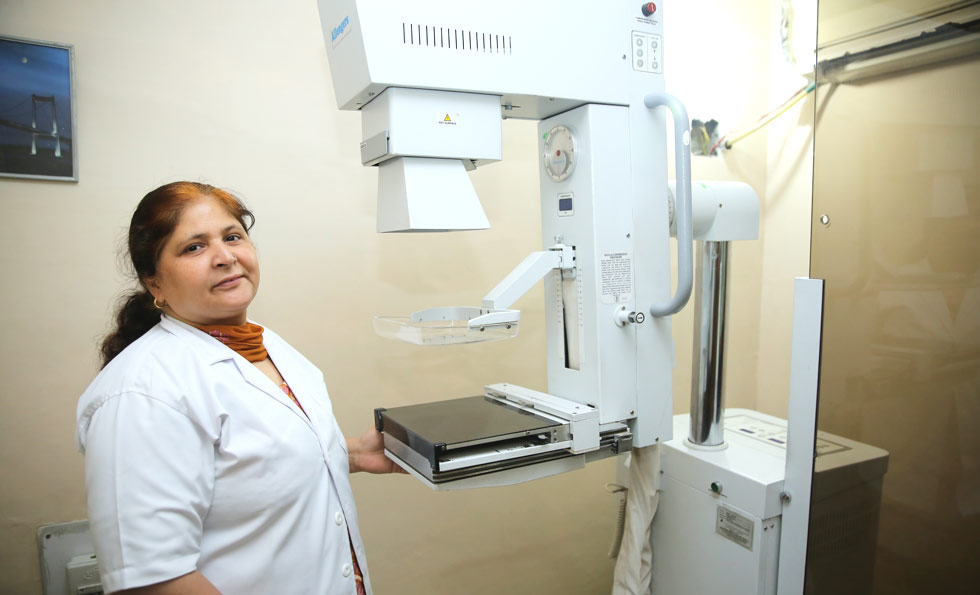Mammography
 What is Mammography?
What is Mammography?
Mammography, an x-ray of your breast, is the most accurate method of breast cancer detection. This test is used to screen for breast cancer as well as to determine the cause of breast complaints, such as lumps or nipple discharge. While this examination does use radiation, the exposure is minimal.
The American Cancer Society recommends that all women have a yearly screening mammograms after age 40. Also, your doctor may order a mammogram to determine the cause of a change in the breast, such as a new or enlarging lump, or nipple discharge.
You should avoid using deodorants or powders on the day of the examination. These products contain ingredients that can cause a false positive reading on your mammogram.
Notify your doctor and the mammography technologist if you are breast feeding or if there is any possibility that you are pregnant.
The technologist will ask you to remove your clothing from the waist up and put on a gown. You may be asked to remove certain types of jewelry if they will interfere with the examination.
You will be asked to stand by the X-ray machine. The technologist will assist you to position your breast on an x-ray plate for each picture. You may be asked to lift your arm or use your hand to hold your other breast out of the way.
Once positioned, another x-ray plate will come down to the first, compressing and flattening the breast tissue. In general, the flatter the breast tissue is squeezed, the more accurate the picture. While this may be uncomfortable, it is the most important factor in obtaining the best possible pictures. As the picture is being taken, you will need to stay perfectly still and hold your breath. This limits motion, thereby preventing blurring of the picture. Usually, two pictures are taken of each breast. One is a top view, the other a side view.
